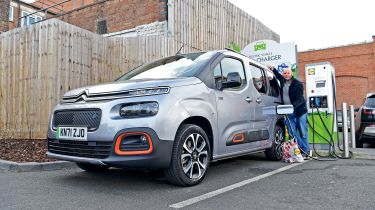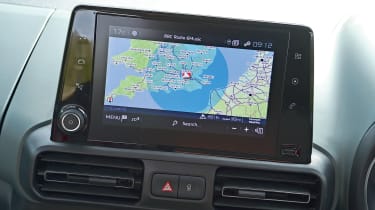Citroen Berlingo review - MPG, CO2 and running costs
Buyers have a choice of frugal petrol and diesel engines, or greener electric power, but regardless of which you choose, running costs should be low

The Berlingo is offered with a choice of petrol or diesel engines, or you can get the pure-electric e-Berlingo, which is by far the most expensive option in the range, but it should be the cheapest to run in the long term.
That said, a good many people aren’t quite ready to make the switch to electric, or don’t have anywhere they could charge an EV. In that case, whether you pick a petrol or a diesel, the Berlingo’s engines sip fuel rather than guzzle it down, plus they all benefit from stop/start technology, which helps to save fuel in heavy traffic.
The pick of the engines is the mid-range BlueHDi 100 diesel, as Citroen claims this 1.5-litre oil-burner can return up to 54.4mpg. The BlueHDi 130 uses a more powerful version of the same 1.5-litre four-cylinder diesel motor, so unsurprisingly it’s less efficient, capable of returning 51.9mpg at best.
Still, it’s more frugal than the petrol offering. The PureTech 110 is a 1.2-litre turbocharged three-cylinder motor that, in the Berlingo, will achieve between 37-48mpg. At those rates, you should be able to cover up to 500 miles if you fill the Berlingo’s 61-litre fuel tank.
CO2 figures (measured using WLTP regulations) range from 149g/km in the lowest-powered diesel model, rising to 158g/km in the petrol model; these figures do not change if you opt for the long-wheelbase versions.
Electric range, battery and charging
Both the e-Berlingo M and XL use a 50kWh battery which allows for a maximum driving range of 177 and 168 miles, respectively. Those figures are not ideal if you frequently visit family over 300 miles away – as we learned when we ran an e-Berlingo Flair XTR M as a long-term test car. However we did find that driving around town in eco mode, and with the stronger regenerative braking setting activated, we could get close to the e-Berlingo’s claimed range.
Used - available now

2020 Citroen
Berlingo
20,577 milesAutomaticDiesel1.5L
Cash £16,516
2024 Citroen
Berlingo
35,420 milesAutomaticDiesel1.5L
Cash £14,640
2021 Citroen
Berlingo
39,012 milesManualDiesel1.5L
Cash £16,750
2020 Citroen
Berlingo
11,590 milesManualDiesel1.5L
Cash £18,599The e-Berlingo has a maximum charging speed of 100kW, so if you decide to take the electric MPV on a longer journey, topping up from 0 to 80 per cent will take just 30 minutes if you use a suitably fast rapid charger. Day to day though, most people charge their cars at home or using slower public charging points nearby. A standard 7kW home wallbox needs seven and a half hours to fully replenish the e-Berlingo’s 50kWh battery.
Insurance groups
As the Berlingo offers little in the way of sporty intent, insurance costs should prove to be modest throughout the range. Insurance group ratings start from 12 for the least powerful petrol version in entry-level Feel trim, and climb to group 20 for the top-of-the-range e-Berlingo XL in Flair XTR trim.
Check your tax status and renewal date in seconds. Check your VED car tax now...
Depreciation
Due to their popularity, family SUVs and crossovers will retain more of their original value compared to MPVs like the Berlingo, though the depreciation shouldn’t be disastrous. Our latest expert data suggests the e-Berlingo should hold onto around 48 per cent of its list price after three years and 36,000 miles of ownership, and we expect the petrol and diesels to be just behind come trade-in time.
To get an accurate valuation on a specific model check out our valuation tool...










